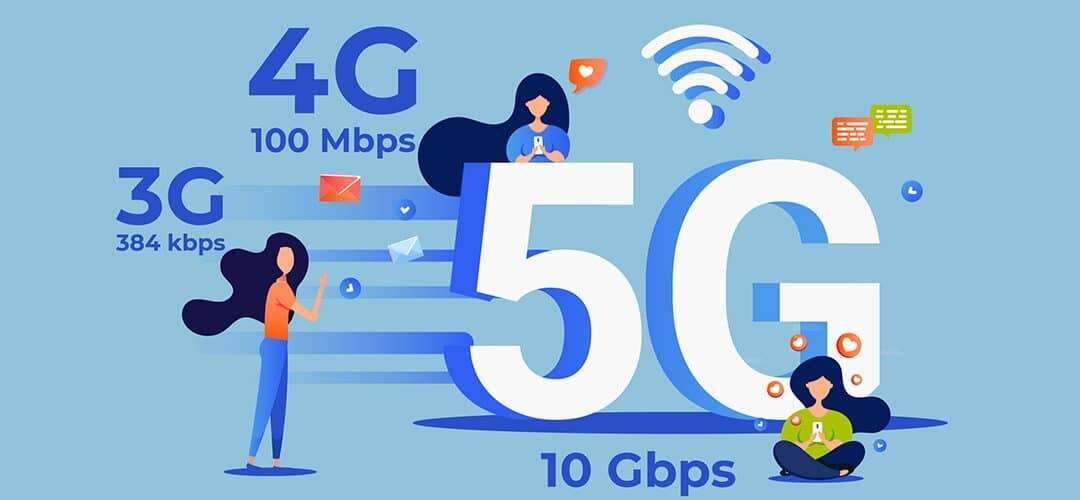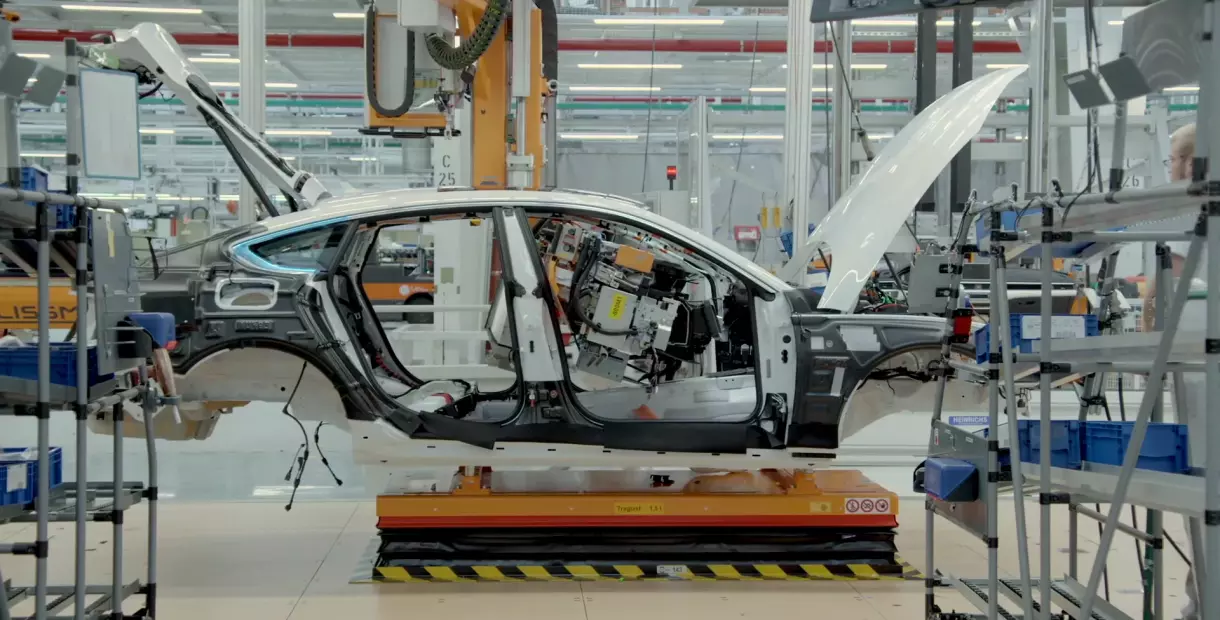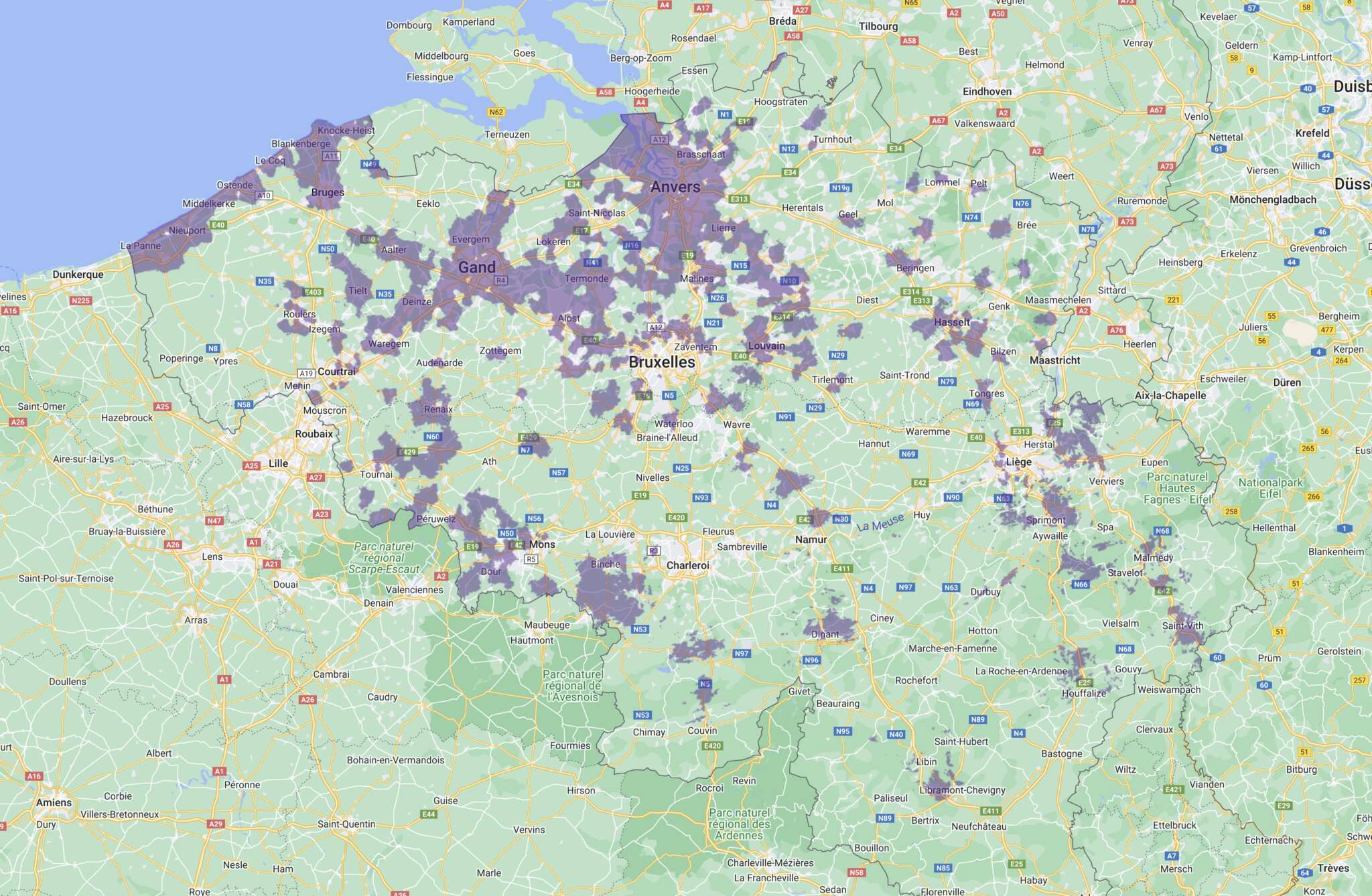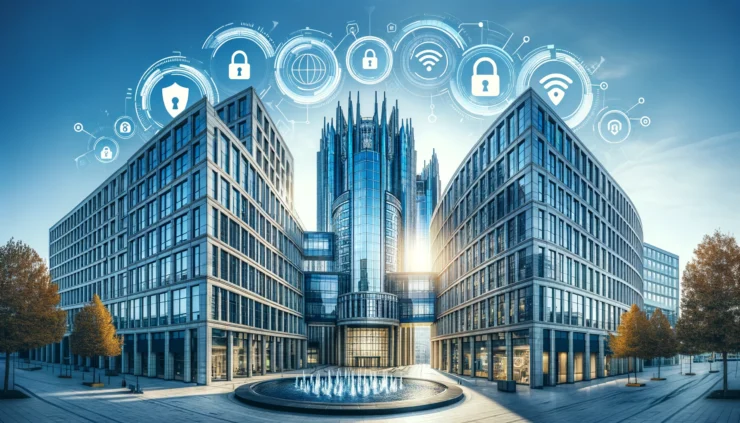5G is the latest evolution in mobile networks. Its rollout in Belgium has experienced several delays, but deployment is now accelerating, both in Wallonia and Brussels, apart from Flanders. Moreover, Belcenter Mobile subscriptions with over 7 GB of data can enjoy it for free. To fully understand the stakes and advantages, we will explain everything you need to know about the deployment and use of 5G in addition to the current 4G.
What Is 5G Technology?
5G is the fifth generation of mobile network technology. It boasts significantly higher download and upload speeds, reduced latency, and better capacity than its predecessor, 4G. 5G is designed to meet the growing demand for data and to support a multitude of connected devices, from smartphones to Internet of Things (IoT) devices.
From 2G to 5G
Mobile technologies have evolved rapidly since the late 1990s. This evolution has had a profound impact on businesses, which now use mobile networks for a variety of tasks, including communication, collaboration, workforce mobility, and IoT. Let’s take a look back at the 5 major steps in mobile internet, from 2G to 5G.
- GPRS (2G): General Packet Radio Service (GPRS) is the first generation of packet-switched mobile technology. It was introduced in 1997, with download speeds of 56 kbps and upload speeds of 11 kbps. GPRS was mainly used for voice and SMS communication, but it also allowed slow-speed data downloads. Iconic terminals include the Nokia 7210 (1999) and the BlackBerry 5810 (2002).
- EDGE (2.5G): Enhanced Data Rates for GSM Evolution (EDGE) is an evolution of GPRS. It was introduced in 2003, with download speeds of 171 kbps and upload speeds of 59.2 kbps. EDGE improved GPRS performance for voice and SMS communication, as well as data downloads. Two iconic phones are the Nokia 6680 (2004) and the Motorola Razr V3 (2004).
- 3G: The third generation (3G) is the first broadband mobile technology. It was introduced in 2001 and offers download speeds of 2 Mbps and upload speeds of 144 kbps. 3G revolutionized mobile communication, enabling users to download videos, stream audio, and browse the internet at high speeds. Two iconic smartphones are the iPhone 3G (2008) and the Samsung Galaxy S (2010).
- 4G: The fourth generation (4G) is the second generation of broadband mobile technology. It was introduced in 2009 and offers download speeds of 100 Mbps and upload speeds of 50 Mbps. 4G continued the evolution of mobile communication, offering even faster speeds and wider bandwidth. Today, 4G+ provides high speeds (often 400 Mbps). Two iconic smartphones are the Samsung Galaxy S4 (2013) and the Apple iPhone 6 (2014).
- 5G: The fifth generation (5G) is the third generation of broadband mobile technology. It was introduced in 2019 and offers download speeds of 1 Gbps and upload speeds of 200 Mbps. 5G is the fastest mobile technology to date, and it holds significant potential for businesses. Two iconic smartphones are the Samsung Galaxy S22 Ultra (2022) and the Apple iPhone 13 Pro Max (2021).

Differences Between 4G and 5G
The major difference between 4G and 5G lies in their ability to transmit data at unprecedented speed and efficiency. 5G offers a much wider bandwidth, enabling it to handle a more significant number of simultaneous connections without compromising service quality. Add to that significantly lower latency, which is expected to approach zero latency in the years to come. This means that businesses can expect faster downloads, better communication quality, and an enhanced user experience.
Benefits of 5G in 2024
5G brings significant improvements in three main areas: capacity, latency, and speed.
- 5G supports more connected devices than 4G, which sometimes experiences congestion, especially in large cities.
- Latency, or network response time, is greatly reduced with 5G, crucial for real-time applications such as telemedicine or online gaming.
- Download speeds can reach 10 Gbps (currently 1 Gbps), making the transfer of large files and streaming of high-definition videos faster and more reliable. For SMEs, this translates to increased mobility efficiency. It will also facilitate remote work and foster collaboration among geographically dispersed teams.
Boosted Internet of Things (IoT)
The adoption of 5G by businesses also stimulates the development of the Internet of Things (IoT). With faster connection speeds and reduced latency, businesses can connect more smart devices to their network. This opens the door to new opportunities in areas such as home automation, logistics, and transportation.
Innovative Applications
5G also opens the door to innovative applications in various sectors. For example, in the medical field, it will enable advanced telemedicine in Belgium, with remote diagnostics and robot-assisted surgeries. In the manufacturing sector, it will facilitate the use of autonomous robots to optimize production processes.
Artificial Intelligence
The combination of 5G with artificial intelligence (AI) will become a true catalyst for innovation in businesses in Belgium. AI algorithms will be able to process and analyze massive amounts of data in real time, allowing businesses to make more informed decisions and develop new products and services based on generated insights.
Smart Factories
In the smart factory, the network can collect real-time information to optimize and automate the production process. Wireless communication takes place between machines, tools, sensors, and controllers. This is the case, for example, in an Audi production site in Germany. Sensor manufacturer SICK and Ericsson have partnered to deploy 5G: “Wirelessly equipped vehicles move autonomously in the factory, while machines and humans collaborate seamlessly.”






